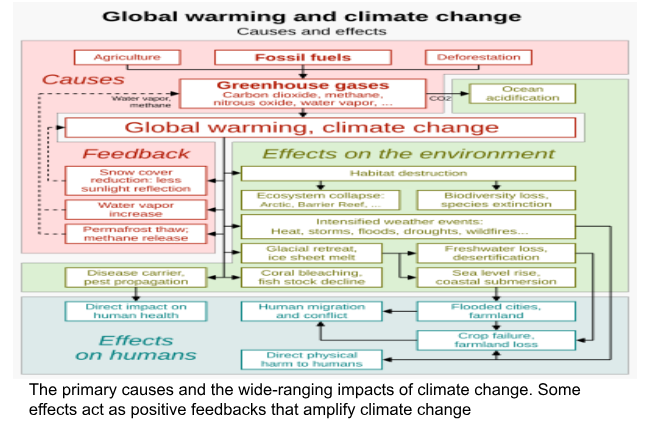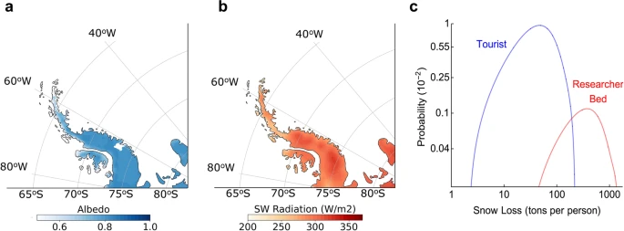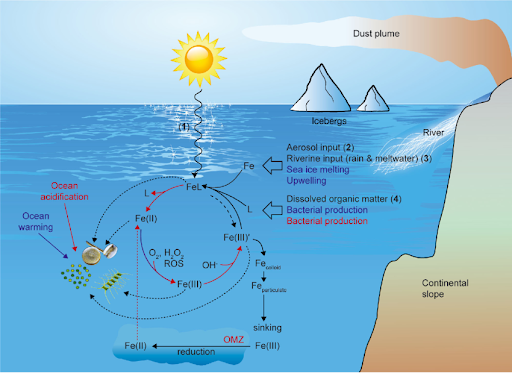10 Nov to 24 Nov, 2024
UNDERSTANDING AIR POLLUTION
Why in news : The Indo-Gangetic Plain, encompassing Delhi, Bihar, Chandigarh, Haryana, Punjab, Uttar Pradesh, and West Bengal, has recently been severely affected by intense air pollution.
About :
Air pollution is the contamination of the air by substances that can harm human health or the environment. These substances can be introduced into the atmosphere by natural processes or human activity.
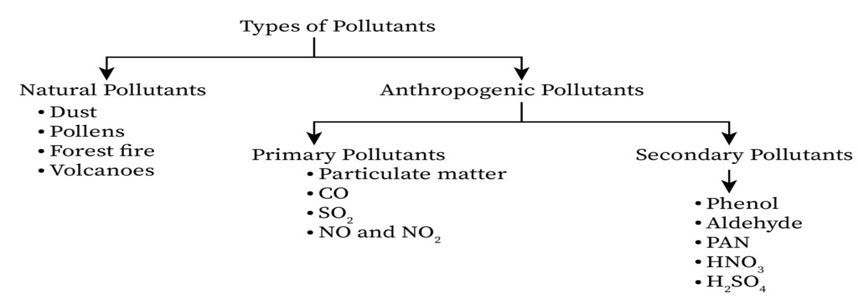
Causes of Air Pollution in Delhi and the Gangetic Plain
1. Stubble Burning in Northern India : In 2024, Punjab accounted for 74% of 400,461 stubble burning incidents, while Uttar Pradesh saw a 38% rise from 2023 (Sep–Oct).Stubble burning contributes 25-30% to Delhi’s pollution on peak days (Oct–Nov).

2. Vehicle Emissions : Vehicles contribute 40% of PM2.5 and 81% of NOx emissions in India (IIT Kanpur, TERI). Slow EV adoption and inadequate public transport exacerbate the problem.
3. Industrial Emissions : Relaxed pollution norms in critically polluted industrial clusters further degrade air quality. Delhi-NCR power plants remain non-compliant with 2022 sulfur emission deadlines.
4. Construction and Urban Development : Poor dust management and failure to use anti-smog measures worsen pollution levels, especially in winter. Delhi's construction sites often lack tarpaulin covers or water sprinklers for dust control.
5. Climatic Factors : Unusual October rainfall exacerbates air quality issues by increasing pollutant accumulation. Patna and Lucknow report worsening AQI during winter due to prolonged inversion layers.
6. Implementational Gaps in Pollution Control : Delhi has used only 32% of allocated funds under the National Clean Air Programme (NCAP). Noida utilized just 11% of NCAP funds, while cities like Faridabad and Ghaziabad also underperformed.
7. High AQI Levels Across the Region : Cities like Noida, Ghaziabad, and Lucknow frequently exceed safe PM2.5 levels. Ghaziabad remains one of the world’s most polluted cities, as per IQAir rankings.
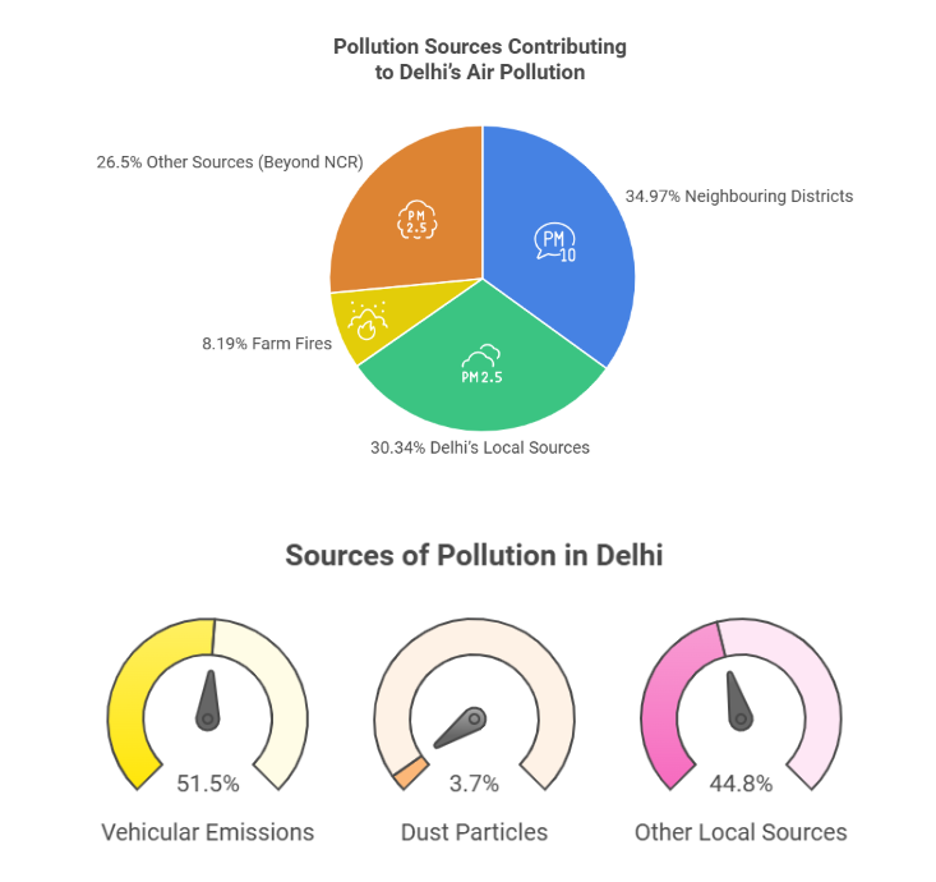
Challenges Posed by Air Pollution
- Violation of Constitutional Rights : Air pollution infringes Article 21 (Right to Life) and SDG 3 (Good Health and Well-being) by depriving citizens of a healthy environment.
2. Severe Health Impacts : According to the 2024 Air Quality Life Index, Delhiites could lose 11.9 years of life expectancy. - Risks to Vulnerable Groups : Children, elderly, and those with pre-existing conditions face rising cases of asthma and lung cancer during high-pollution months.
- Reduced Visibility and Traffic Hazards : Dense smog often lowers visibility to less than 50 meters, leading to disrupted transportation and increased road accidents.
- Economic Costs: Air pollution costs India USD 95 billion annually (3% of GDP) (Clean Air Fund).
- Impact on Education and Productivity : Delhi schools shut down frequently each winter due to hazardous AQI.
Measures Taken to Curb Air Pollution
- Policy Interventions
- National Clean Air Programme (NCAP): Targets a 40% reduction in PM10 by 2025-26; 88 cities showed improvement (FY 2023).
- Graded Response Action Plan (GRAP): Enforces pollution controls based on AQI levels; revised in 2022 to mandate cleaner fuels.
- Comprehensive Action Plan (CAP): Focuses on vehicular emission control, stubble burning mitigation, construction dust management, and public awareness.
- CAAQMS: Automated stations monitor pollutants like PM2.5, PM10, NOx, SO2, and CO to inform policies.
- Vehicular Emission Controls
- BS-VI Standards: Rolled out in 2020 to reduce vehicular pollutants.
- FAME-II Scheme: Promotes EV adoption; SATAT Scheme supports compressed biogas (CBG) production.
- Highways and Expressways: New routes reduce urban traffic congestion, e.g., Eastern Peripheral Expressway around Delhi.
- Industrial Emission Standards
- New SO2/NOx Limits: Applied to thermal plants and 56 industrial sectors, with partial compliance.
- Pet Coke and Furnace Oil Ban: Enforced in NCR to curb coal-related emissions
- Measures to Reduce Stubble Burning
- Subsidized Machinery: Financial aid provided for crop residue management tools like Happy Seeders.
- Crop Diversification: Promotes alternatives to paddy in Punjab
- Biomass Utilization: Thermal plants use stubble-based pellets as renewable fuel.
- Delhi employs Pusa bio-decomposer to manage paddy residue sustainably.
- Indoor Air Quality Improvement
- Pradhan Mantri Ujjwala Yojana (PMUY): Provides LPG connections to reduce solid fuel reliance, though 53% of households still use solid fuels.
- Pilots for retrofitting older vehicles with emission controls have shown promise but face cost barriers.
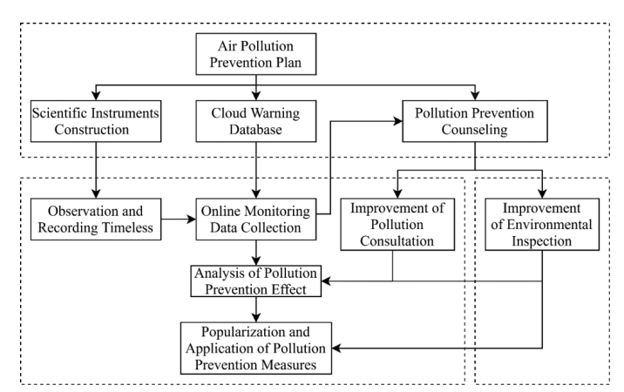
Plastic Pollution
- Ocean Currents and gyres: Plastic debris accumulates in ocean gyres due to currents and wind patterns. The Great Pacific Garbage Patch is a hotspot of floating plastic waste.
- Microplastics in Arctic snow demonstrate the global dispersal of pollutants.
Radioactive waste pollution
- Radioactive materials persist in the environment for centuries, contaminating soil, water, and air.
- Chernobyl’s exclusion zone showcases long-term consequences of radioactive leakage.
- Yucca Mountain (USA) was considered for deep geological radioactive waste storage due to its arid environment and minimal tectonic activity.
Way Forward to Combat Pollution
1. Comprehensive Crop Residue Management : Governments should procure crop residues at fair prices, incentivizing farmers and promoting their conversion into bio-pellets for energy generation. Establishing pellet plants near agricultural markets will lower transportation costs and enhance biomass energy adoption.
2. Accelerated Transition to Clean Energy : Strengthen India’s 500 GW non-fossil fuel goal by expanding rooftop solar projects and green hydrogen initiatives.
3. Stricter Industrial Emission Standards : Enforce FGD systems in coal plants to curb SO₂ emissions, following China’s successful model.
4. Modernized Urban Infrastructure : Promote projects like Miyawaki forests, rooftop gardens, and green spaces to mitigate urban heat islands and reduce pollution.
5. Strengthened Vehicular Emission Controls : Develop EV infrastructure and offer tax incentives to increase the use of clean vehicles.
6. Technology-Driven Air Quality Management : Expand real-time air quality monitoring for better planning and policy implementation.
Where to use :
Paper I ( Geography Optional ) : Environmental Geography
Paper 1( General Studies ) : Pollution
Source :
RAPID GREENING OF ANTARCTICA
Why in news : Satellite data analysis has revealed that plant cover on the Antarctic Peninsula has grown 14 times over the past 35 years, driven by rising temperatures. Vegetation, mainly mosses and lichen, has expanded from under 1 km2 in 1986 to nearly 12 km2 by 2021.
About:
Increasing Greening Rate (2016–2021) : The rate of vegetation growth increased by over 30% between 2016 and 2021, reflecting a significant transformation in Antarctica's landscape. This trend highlights that even distant, cold regions like Antarctica are not immune to the impacts of climate change.
Rapid Temperature Rise : Temperatures in Antarctica are increasing at more than twice the global average. Since 1950, the Antarctic Peninsula has warmed by approximately 3°C and is heating five times faster than the rest of the continent.
Extreme Heat Events : Antarctica has experienced record-breaking heatwaves, including a notable heatwave in March 2022 when temperatures soared 39°C above the norm. Additionally, in July 2024, some areas in Antarctica recorded ground temperatures that were up to 28°C higher than average.
Environmental Implications of Increased Plant Growth
Threat of Invasive Species : New soil created from organic material may make parts of the Antarctic Peninsula more suitable for non-native species. Introduced by eco-tourists or researchers, these species could alter local ecosystems and pose risks to native flora and fauna.
Decreased Albedo Effect: With plants covering more of the ground, the region's darker surface absorbs more solar radiation, decreasing its reflective capacity. This change could lead to further temperature increases, accelerating ice melt and influencing global sea levels.
Decline of Ice Mass : Ice loss in Antarctica has accelerated, with the continent losing 280% more ice in the 2000s and 2010s than in previous decades. The area of sea ice is also shrinking, with 2024 marking the second smallest recorded extent. These wetter conditions may support even greater vegetation growth.
Future Warming Concerns : Continued greenhouse gas emissions are expected to drive further temperature increases in Antarctica, likely supporting further vegetation expansion and contributing to the continent's evolving landscape.
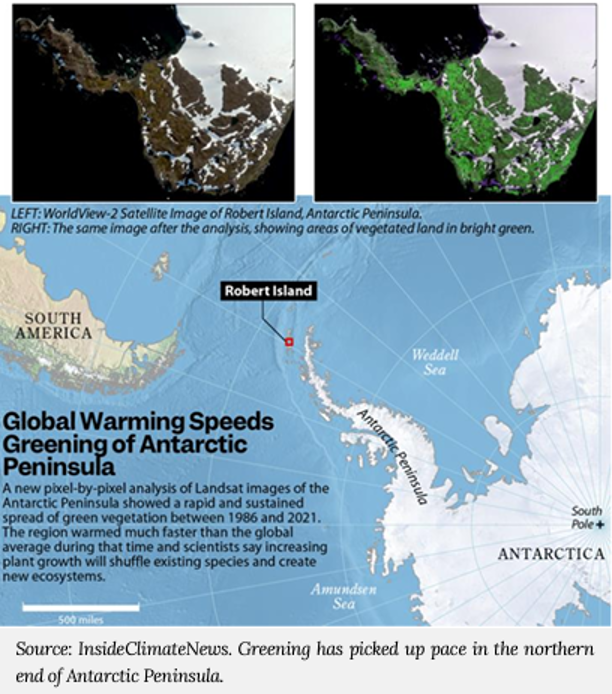
Where to use :
Paper I ( Geography Optional ) : Global Warming related issues
Paper III ( General Studies ) : Environmental Conservation
Source :
MIGRATION OF ELEPHANTS IN INDIA
Why in news : Researchers have discovered in a recent study that Indian elephants migrated southward over several millennia, progressively losing genetic diversity with each migration.
About :
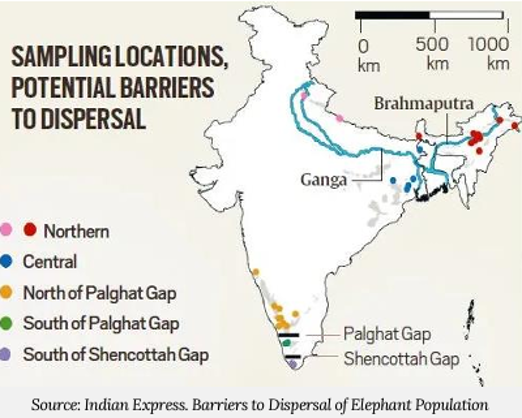
Key Findings on Indian Elephant Migration and Genetic Diversity
Migration from North to South : Over several millennia, Indian elephants gradually migrated from northern to southern regions of India.
- This southward movement led to a decline in genetic diversity, with the southern populations exhibiting reduced genetic strength.
Five Genetically Distinct Populations
Scientists have identified five genetically distinct populations of elephants across India:
- Northern population along the Himalayan foothills (spanning from the Northwest to the Northeast).
- Central Indian population found in parts of central India.
- Three southern populations, dispersed across Tamil Nadu and Kerala, located south of the Shencottah Gap.
Southernmost Population and Genetic Diversity : The population furthest south, beyond the Shencottah Gap, has the lowest genetic diversity, making it especially vulnerable. This isolated group, consisting of fewer than 150 elephants, faces a heightened risk of extinction.
Historical Divergence of Populations
- The northern population diverged from other groups more than 70,000 years ago.
- Central Indian elephants separated around 50,000 years ago.
- The three southern populations diverged approximately 20,000 years ago.
Serial Founder Effect and Inbreeding Risk : As the elephants moved southward, smaller population sizes resulted in the serial founder effect. This process heightened the risk of inbreeding depression, increasing the likelihood of passing on harmful genetic traits.
Southern Barrier : The study found that the Shencottah Gap served as a natural barrier, further isolating the southern elephant populations. This previously unrecognized barrier complements the Palghat Gap, which was thought to be the only natural divider in the Western Ghats.
Central and Northern Populations : Central Indian elephants occupy regions between southwestern West Bengal and eastern Maharashtra, forming a unique population. The northern elephants, distributed in the Northwest (Uttarakhand, Uttar Pradesh) and Northeast (Assam, Arunachal Pradesh), are separated by the Ganga and Brahmaputra rivers but were historically connected.
Habitat Connectivity : The study underscores the importance of preserving habitat connectivity, particularly in the Western Ghats, where infrastructure development has disrupted gene flow between elephant populations.
Where to use :
Paper III ( General Studies ) : Wildlife and their habitats , Environment Conservation
Source :
Equatorial Electrojet
Equatorial Electrojet : The equatorial electrojet is a concentrated eastward-flowing electric current located in the ionosphere above Earth's magnetic equator. It results from solar heating and geomagnetic effects, intensifying during solar activity. This phenomenon influences space weather, satellite communication, and navigation systems by altering ionospheric conditions and disrupting radio wave propagation in the equatorial region.
Lunar vulcanism
Lunar vulcanism : Lunar volcanism refers to volcanic activity on the Moon, primarily active 1 to 3 billion years ago. Unlike Earth, the Moon's volcanic activity lacked tectonic influences and was driven by internal heat. It produced vast basaltic lava plains, known as maria, shaping much of the lunar surface and providing clues about the Moon's thermal evolution.
Black hole triple system
Black hole triple system : A black hole triple system comprises three interacting black holes bound by gravity, often formed during galaxy mergers. These rare systems are vital for studying gravitational wave dynamics, black hole evolution, and the complex gravitational interactions in dense cosmic environments. Observing them provides critical insights into extreme astrophysical conditions and relativistic phenomena..
Sea ranching
Sea ranching : Sea ranching is a sustainable aquaculture method where juvenile fish, shellfish, or other aquatic species are released into natural water bodies for growth and eventual harvesting. It supports fisheries management, enhances depleted stocks, conserves marine biodiversity, and contributes to food security without the environmental impacts of confined aquaculture practices.
Electroception
Electroception : Electroception is the ability of certain aquatic organisms, like sharks and electric fish, to detect weak electric fields in their environment. This sensory mechanism aids in locating prey, navigation, and interspecies communication. It relies on specialized receptors to perceive electric signals generated by other organisms or environmental changes, vital in murky or low-visibility waters.
TEMPERATURE INVERSION IN ST. LOUIS
- Temperature inversion predominantly occurs during winter, particularly at night and in the early morning.
- Atmospheric stability forms a barrier that impedes the dispersion of PM 2.5 particles, consequently deteriorating the Air Quality Index. This phenomenon results in the formation of a pollution dome.
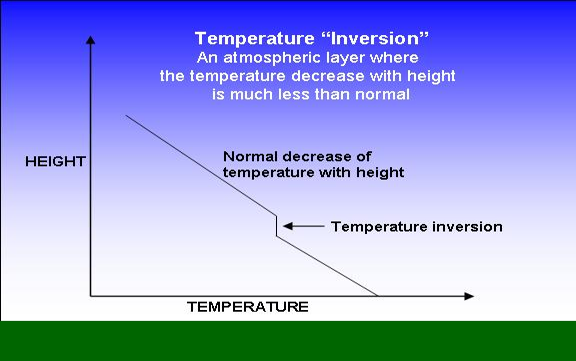
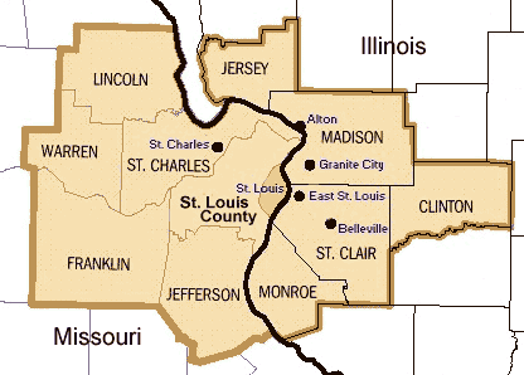
Where to use :
Paper I ( Geography Optional ) : Temperature Inversion and Pollution dome
Places in News - 24 November 2024
1. Tamor Pingla Tiger Reserve
Why in news : India has recently notified the Guru Ghasidas-Tamor Pingla (GGTP) Tiger Reserve in Chhattisgarh as the country's 56th tiger reserve.
- It is located in the northern part of the state Chhattisgarh, bordering Madhya Pradesh and Jharkhand.
- It is the third largest tiger reserve in the country after Nagarjunasagar-Srisailam Tiger Reserve in Andhra Pradesh and Manas Tiger Reserve in Assam.
- This tiger reserve is connected to the Bandhavgarh Tiger Reserve in Madhya Pradesh to the West and Palamau Tiger Reserve in Jharkhand to the East.
- It is nestled in the Chota Nagpur plateau and partly in Baghelkhand plateau.
- It is contiguous with the Sanjay Dubri Tiger Reserve in Madhya Pradesh.
- Approx : Chotanagpur
2. Dhudmaras
Why in news : Dhudmaras, a village in Chhattisgarh’s Bastar district, has been selected to participate in the Best Tourism Village Upgrade Programme (BTVUP) under the United Nations Tourism for Rural Development Programme (UNTRDP) by the UN World Tourism Organisation (UNWTO).
- It is a village situated in the heart of Kanger Valley National Park.
- Nestled in dense forests with the Kanger River flowing through it.
- Villagers offer homestay options to tourists. Local youth serve as guides, enhancing the visitor experience.
- Approx: Bastar
3. Barak River
Why in news : Three bodies found floating in Manipur's Barak River, in Jiribam district, are believed to be victims of the ongoing violence in the state.
- It is the second largest river in the Northeast India after the Brahmaputra.
- The river runs through Manipur, Nagaland, Mizoram, Assam in India, and Bangladesh.
- It further enters Bangladesh where it is known by the name of the Surma and the Kushiyara and later called the Meghna before receiving the combined flow of the Ganga and the Brahmaputra.
- It finally outfalls into the Bay of Bengal.
4. Raiyoli
Why in news : The Geological Survey of India wants Dinosaur Fossil Park and Museum in Raiyoli village in Gujarat to get a UNESCO Global Geoparks tag.
- Raioli in district Mahisagar of Gujarat is one of the most important dinosaur sites in Asia.
- The fossilized bones of the Rajasauras Narmadensis, a dinosaur with an unusual head crest, were discovered here.
- The Raioli Dinosaur Site was first discovered in 1981 & the fossils at the Raioli Site are more than 65 million years old.
- Fossils can be seen on the rocks of the park.It is also said to be World’s 3rd largest Dinosaur Fossil Site.
- Approx : Mahisagar
5. Kazhuveli Bird Sanctuary
Why in news : Recently, the centre declared the Kazhuveli Bird Sanctuary in Tamil Nadu as new wetland of Ramsar Sites.
- It is located in the state of Tamil Nadu.
- It lies adjacent to the Bay of Bengal along the east coast.
- It is one of the major wetlands on the Coromandel Coast after Pulicat Lake.
- The lake is connected to the Bay of Bengal by the Uppukalli Creek and the Yedayanthittu estuary and is visited for nesting by migratory birds on the Central Asian flyway.
- The southern part of the wetland has been reserved land since 2001.
- Approx : Villupuram
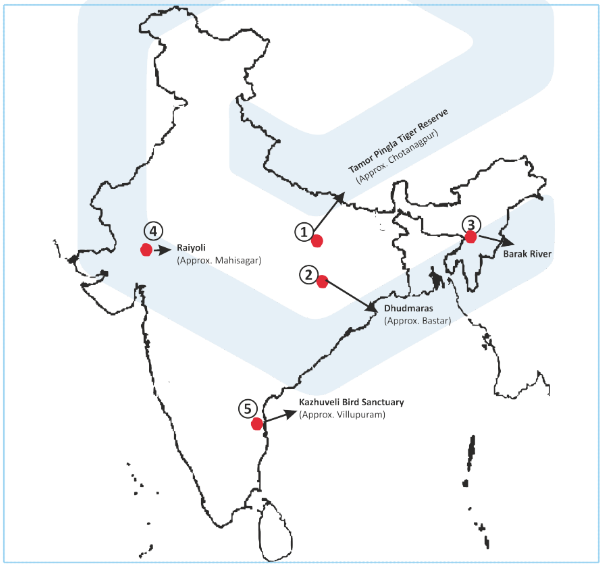
Fortnightly KOSMOS MCQs Practice - 24th November 2024
Q1. Consider the following statements regarding the Mhadei Wildlife Sanctuary:
- It has been recognized as an International Bird Area due to the presence of various bird species, including the Malabar parakeet and Rufous babbler.
- The Netravati River flows through the sanctuary.
Which of the statements given above is/are correct
- Only 1
- Only 2
- Both 1 and 2
- Neither 1 nor 2
Q2. Consider the following statements regarding Similipal National Park:
- Similipal has been included in UNESCO's Biosphere Reserves list since 2009 and was declared a tiger reserve under Project Tiger.
- Its rivers provide a habitat for Gharials.
Which of the statements given above is/are correct
- Only 1
- Only 2
- Both 1 and 2
- Neither 1 nor 2
Q3. Consider the following statements regarding Greenhouse Gas.
- Carbon dioxide (CO₂) is the most prevalent greenhouse gas in the atmosphere.
- Methane (CH₄) is primarily emitted from livestock farming and landfill sites.
- Industrial fluorinated gases have a much lower Global Warming Potential (GWP) compared to carbon dioxide (CO₂).
Select the correct answer using the code given below:
- 1 and 2 only
- 2 only
- 1 only
- 1, 2 and 3
Q4. 30 by 30 target sometimes seen in news is related to which of the following?
- Reducing carbon emissions by 30% by 2030.
- Increasing the number of electric vehicles on roads by 30% by 2030.
- Protecting 30% of the earth’s land and oceans by 2030.
- Achieving 30% renewable energy in the global energy mix by 2030
Q5. Cryptobiosis, recently in the news, is related to which of the following?
- process in which organisms harness light to produce energy despite a lack of nutrients.
- A novel blockchain technology designed for secure transactions involving living modified organisms.
- A technique where plants are genetically modified to enhance their resistance to pests.
- A metabolic condition that enables organisms to endure extreme environmental conditions.
Q6. Consider the following statements:
- The Sun shows differential rotation, with its equator completing a rotation in about 25 days, while the poles take approximately 35 days.
- The chromosphere is a thin layer of plasma situated between the Sun's visible surface and its outer atmosphere.
Which of the statements given above is/are correct?
- Only 1
- Only 2
- Both 1 and 2
- Neither 1 nor 2
Q7. Consider the following statements:
- Reduce pesticide-related risks by 50% by 2030.
- Address climate change using nature-based solutions.
- Restore 30% of degraded ecosystems worldwide by 2030.
How many of the above is/are key goals of the Kunming-Montreal Global Biodiversity Framework?
- Only one
- Only two
- All three
- None
Q8. Consider the following statements:
- The Infrastructure for Resilient Island States (IRIS) initiative, launched at COP21 in Paris, seeks to help Small Island Developing States (SIDS) attain sustainable development.
- In 2022, the Infrastructure Resilience Accelerator Fund (IRAF) was created with the backing of the United Nations Development Programme and the United Nations Environment Programme.
Which of the statements given above is/are correct?
- Only 1
- Only 2
- Both 1 and 2
- Neither 1 nor 2
Q9. Consider the following statements:
- The tailless Hoolock Gibbon is the only ape species native to India.
- The Western Hoolock Gibbon, found across all northeastern states, is classified as Endangered on the International Union for Conservation of Nature's Red List.
Which of the statements given above is/are correct?
- Only 1
- Only 2
- Both 1 and 2
- Neither 1 nor 2
Q10. Consider the following statements related to Millets:
- De-branning makes millets softer but decreases their shelf life.
- Millets are rich in bioactive flavonoids.
- India is the top producer and exporter of millets.
How many of the above statements is/are correct?
- Only one
- Only two
- All three
- None
Share the article
Edukemy’s Current Affairs Quiz is published with multiple choice questions for UPSC exams
MCQ
Get Latest Updates on Offers, Event dates, and free Mentorship sessions.

Get in touch with our Expert Academic Counsellors 👋
FAQs
Geography Current Affairs focuses on the contemporary issues, events, and developments in the field of geography. It covers recent geographical phenomena, environmental changes, geopolitical shifts, and related news. This differs from regular geography studies which may focus more on foundational concepts, historical contexts, and theoretical frameworks.
Updates are provided regularly to ensure that subscribers stay informed about the latest developments in geography. Typically, updates are provided on a fortnightly basis, depending on the frequency of significant events and changes in the field.
Absolutely. Geography Current Affairs serves as a valuable resource not only for Geography optional but also for GS papers, especially GS Paper 1 (covering Indian Heritage and Culture, History, and Geography of the World and Society) and GS Paper 3 (covering Technology, Economic Development, Biodiversity, Environment, Security, and Disaster Management). It aids in building a holistic understanding of various topics and strengthens answer-writing skills by incorporating contemporary examples and perspectives.
Geography Current Affairs holds immense importance for UPSC preparation, particularly for aspirants opting for Geography optional. It helps candidates stay updated with the latest developments, geographical phenomena, environmental issues, and geopolitical shifts worldwide, aligning them with the dynamic nature of the subject as tested in the UPSC examinations.

